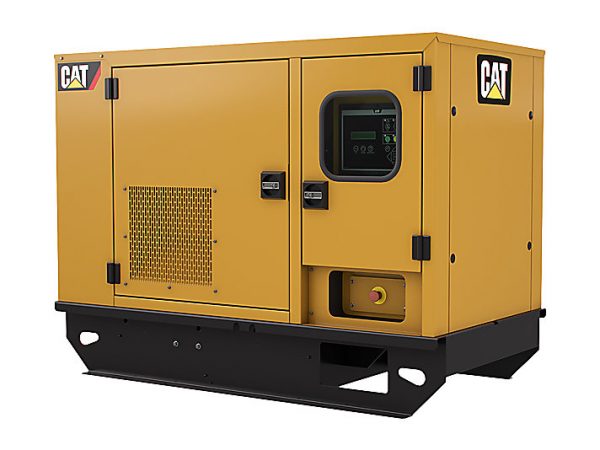cross-posted from: https://lemmy.world/post/34272214
A California-based biotechnology startup has officially launched the world’s first commercially available butter made entirely from carbon dioxide, hydrogen, and oxygen, eliminating the need for traditional agriculture or animal farming. Savor, backed by Microsoft co-founder Bill Gates through his Breakthrough Energy Ventures fund, announced the commercial release of its animal- and plant-free butter after three years of development.
The revolutionary product uses a proprietary thermochemical process that transforms carbon dioxide captured from the air, hydrogen from water, and methane into fat molecules chemically identical to those found in dairy butter. According to the company, the process creates fatty acids by heating these gases under controlled temperature and pressure conditions, then combining them with glycerol to form triglycerides.
Mmmmm. Nom nom!
I’d actually be willing to give it a try if it’s vaguely price-competitive, but their website is all glam shots of butter and people doing things with butter and not only doesn’t sell it but doesn’t tell you where you can get it.
Also, they did not do a good job of choosing that name. It looks like there’s a very-similarly-named French Canadian manufacturer of butter, Savör, which apparently isn’t too religious about using their umlaut:
At Savor, we believe the best butter starts with the best environment. That’s why we source our grass-fed dairy butter from New Zealand, a country renowned for its pristine landscapes, sustainable farming, and exceptional dairy quality.
I foresee a collision between those two.
Pretty sure I know the factory that this butter comes from. The Miraka plant; north of Taupō. Geothermally powered, restricts it to a relatively small region in NZ.
Maybe the manufacturer is in New Zealand and the French-Canadian people are the guys who package and sell it or something. Dunno, just did a quick skim of their site.
I doubt it, I think the Miraka plant is produces mostly primary products not the secondary stuff.
Yeah well… I never liked Savör products too much. They go out if their way with all their branding and claims, but you can get very tasty butter from local creameries at similar prices, without the need to ship it frozen halfway across the globe. Especially with milk sourced from the eastern townships or the Saguenay region. And Quebec (where Savör is operating) runs on 100% hydro power, which is equal or better to geothermal. So whatever Savör is gaining from the Miraka plant, is lost on the need to import basically.
Should be a nice change from that silicon based butter I usually get.
Good ol’ Gates, always around to make a quick buck of the bloodied backs of humanity. Never an advancement meant to aid us all he can’t swoop in to parasitize. That’s right Billy boy, I didn’t forget the COVID vaccine patents. Billionaires must be condemned to the rubbish bin of history.
Were just all their rentboys.
This is really about how we feed our species and heal our planet at the same time
Yeah we need more fat. That’s what’s gonna help. More fat. Who owns the Olestra patents and how long until they purchase the artificial fats patent?
Honestly, I think we do need more fat. Everyone seems to be obsessed with less fat and more protein, but fat is an essential nutrient. If you want to lose weight, I recommend increasing your (healthy) fat consumption because you’ll get more satiety per calorie vs carbs, and fatty foods are more likely to have protein than carbs.
If artificial fat can replace dairy or destructivly farmed veggie oil, I’m all for it.
You don’t have to preach nutrition to me, I cook everything from scratch.
The problem here is that obese societies are already over-reliant on fat, so making it more available and cheaper is going to be self-destructive.
No, they’re overly reliant on sugar. If you look at what obese people eat, it’s tons of carbs and fat-free nonsense so they feel like they’re doing something good.
Didnt the Nazis also make something similar using coal?
Yeah #govegan, I love it. I am curious to try it. Great invention.
I’m not a scientist, but isn’t EVERYTHING made of carbon?
Source: Joni Mitchell, Woodstock -
We are stardust, we are golden We are billion-year-old carbon
“Made of” can mean “composed of” or “constructed from”. This is the latter:
Savor says they take carbon dioxide from the air and hydrogen from water, heat them up, oxidize them and get a final result that looks like candle wax but is in fact fat molecules like those in beef, cheese or vegetable oils.
The entire process releases zero greenhouse gases, uses no farmland to feed cows, and despite its industrial appearance, has a significantly smaller footprint.
“In addition to the carbon footprint being much lower for a process like this, right, the land footprint is, like, a thousand times lower than what you need in traditional agriculture,”
Good example of how choice of words can mislead, particularly when intentional.
This could be great, but “proprietary”. Gates is still the same Gates. If you want to save all the land and CO2 this could, release the IP free to all. Flood the market with cheap indistinguishable synobutter, real butter can’t compete with. Milk, cheese and yogurt next please.
How much carbon is emitted to run the factory to make it though? Are we talking a net negative here?
You mean how much butter is emitted
“Savor says they take carbon dioxide from the air and hydrogen from water”
I’m no expert but direct air capture of Co2 and water electrolysis both use a lot of power. So using them for this purpose is likely just a marketing gimmick that doesn’t make any sense either economically or for the climate.
Perhaps. But if we really go hard on green energy, we’ll likely have a lot of excess energy in the daytime, so it makes sense to look into alternatives to land and water intensive products (like dairy and beef) that are heavy on electricity. If it’s a more efficient use of land to have solar panels instead of cows eating grass (and solar panels work just as well on farmland as they do in the desert, unlike grass), then it makes a ton of sense even if it spikes electricity consumption.
Butter is rather low volume, so maybe it’s doable. But it’s very hard to compete with self-replicating organisms that have evolved specifically to use the energy sources, materials and conditions that are abundant on this planet. I’d be more more interested if someone had made a plant make butter.
Having a bunch of machinery sit idle waiting for power to be cheap isn’t particularly good use of resources either. We’d be better off trying to store the power.
Some, as prepping the carbon and hydrogen will take energy. But it wouldn’t be hard to be way better than the emissions associated with dairy farming for butter. Cost could still be higher, though depending on how much material is needed for the process.
I wonder where they source the methane from. Because I pictured a comicbook flip book of a balloon blowing up behind a cow
Methane is easy to produce. Basically, anything that rots produces methane.
They didn’t go into details, and I never took chemistry, but they may not even need methane. From my very basic understanding of chemical chains, triglycerides are made from carbon, hydrogen, and oxygen, and methane is hydrogen and carbon. So you could theoretically convert methane to triglycerides by combining w/ oxygen, but you could also do the same by extracting carbon and oxygen from CO2 and oxygen and hydrogen from water.
Fertilizers are typically generated from natural gas (methane), but green ammonia exists and is produced from air and water and can replace the fossil fuels in fertilizer production. The same could absolutely make sense here.
Methane is just the primary compound in natural gas.
My #1 fear of this… I’m sure they’ll fix it:

(Yes, I used AI to make that. “Black Butter” is also apparently real and actually looks super tasty!)

So as a block it’s your #1 feer, but in a jar it looks super delicious?
Carbon butter - ick.
Black apple butter looks amazing!
Thank goodness we have the assurances of a billionaire oligarch to help steer humanity in the right dietary direction.
Global warming and ecological crises make shifting diets away from animal products a pretty good idea.
Whether it’s antibiotics resistance, deforestation, or greenhouse gas emissions, humanity is paying a very high price for animal agriculture at the current scale.
Problems come up: “BILLIONAIRES SHOULD DO MORE!” Billionaires do more: “WE CANT TRUST BILLIONAIRES!!”
The conclusion ought to be that billionaires shouldn’t exist. Even if they donate most of their wealth, they will still donate in ways that aren’t necessarily solving real problems.
Ruminants creating greenhouse gasses is a problem that can solve itself by returning to huge fucking pastures and cooperative farming.
Instead, we’re getting synthetic food. We’re a decade removed from human grade kibble at this point.
Here again, capitalism is the problem. A capitalist offering capitalism solutions to problems created by capitalism isn’t appealing.
Why not just make a fuel that can power cars if you’re gonna go this far.
cost :/ and low energy conversion efficiency. Whereas expensive novelty edibles may have a high price, fuels, not so much.
We focus too much on efficiency and cost sometimes. Sometimes efficiency is only a “nice to have” while being outweighed by practicality, convenience, safety, and any of the other factors we choose to make a priority.
It is expensive and inefficient for an airplane to have two engines instead of just one. We do it anyway because it’s required for safety and redundancy. We made that the priority, and that was an active choice. We need to start making more active choices about what the priority is when it comes to our energy futures. All priorities have tradeoffs. Cost and efficiency have their own tradeoffs. Question it when people tell you that things can’t be done because of “cost” or “efficiency”. When they do that they’re presupposing what the priority is, but often it’s billionaires trying to cut corners to make themselves richer at our expense, our safety, our futures. We can do inefficient things. Sometimes it’s even the right choice.
I think you’re missing that there are better ways to produce fuels for cars than to chemically synthesize petroleum. It’s all about cost and efficiency if you’re just looking for portable energy. Or we could burn more coal so we can generate the energy needed for synthetic gasoline…
Or we could burn more coal so we can generate the energy needed for synthetic gasoline…
The problem is, people can, do, and will use that exact same argument to say we don’t need any more solar panels or wind turbines, because we don’t need and can’t use or store the excess power for anything and that’s why we need to keep thermal plants as backup for base load generation. Look, when we produce too much electricity, the electricity cost goes to zero and negative! It’s “wasteful and inefficient”! But these two problems can solve each other. Synthetic fuels (doesn’t have to be gasoline, hydrogen is step 1, methane/LNG is a bit more manageable as a chemical fuel. As long as the carbon source is atmospheric, then it and other synthetic hydrocarbons are carbon neutral to burn) provide an on-demand energy sink/storage method that can support and drive more electrification and renewable power, it just has to be part of a consistent and systemic approach with strict regulation and a clear view of the big picture (something sorely lacking these days).
Nailed it.
We need a solar grid that can meet our demand during a 9-hour, overcast, low-angle winter day. That same grid will be producing more than 4 times as much power as we need during a 15-hour, high-angle summer day, even after we include air conditioning loads.
We need massive, seasonal loads to soak up that excess power and keep solar profitable.
Fake butter isn’t going to do it, but things like desalination, hydrogen electrolysis, and Fischer-Tropsch hydrocarbon production are all likely candidates.
I’m glad someone understands.
@MuskyMelon @Gsus4 hydrogen probably… just need further development, I think we are in a technologic race, battery is still winning but it can change…
hydrogen probably… just need further development
You can get a hydrogen car today. Just that if you’re outside a few places like Japan and California, finding a fueling station might be a bit difficult.
https://en.wikipedia.org/wiki/Toyota_Mirai
Sales in Japan began on 15 December 2014 at ¥6.7 million (~US$57,400) at Toyota Store and Toyopet Store locations. The Japanese government plans to support the commercialization of fuel-cell vehicles with a subsidy of ¥2 million (~US$19,600).[12] Retail sales in the U.S. began in August 2015 at a price of US$57,500 before any government incentives. Deliveries to retail customers began in California in October 2015.[13] Toyota scheduled to release the Mirai in the Northeastern United States in the first half of 2016.[14] As of June 2016, the Mirai was available for retail sales in the UK, Denmark, Germany, Belgium, and Norway.[15] Pricing in Germany started at €60,000 (~US$75,140) plus VAT (€78,540).[16]
2025 Mirai
Starting MSRP $ 51,795
https://afdc.energy.gov/fuels/hydrogen-locations#%2Ffind%2Fnearest%3Ffuel=HY
They do fuel up a lot faster than BEVs do, but the fuel cost is considerably higher than for BEVs.
I’ve heard that people made from carbon taste like the real thing too, you all should try it!















